This post may contain affiliate links. Please read our disclosure policy.
Learn how to make authentic Lebanese falafel, one of the favorite street foods of the Middle East. Homemade falafel has a crispy exterior and tender interior, so good to dip in tahini sauce.
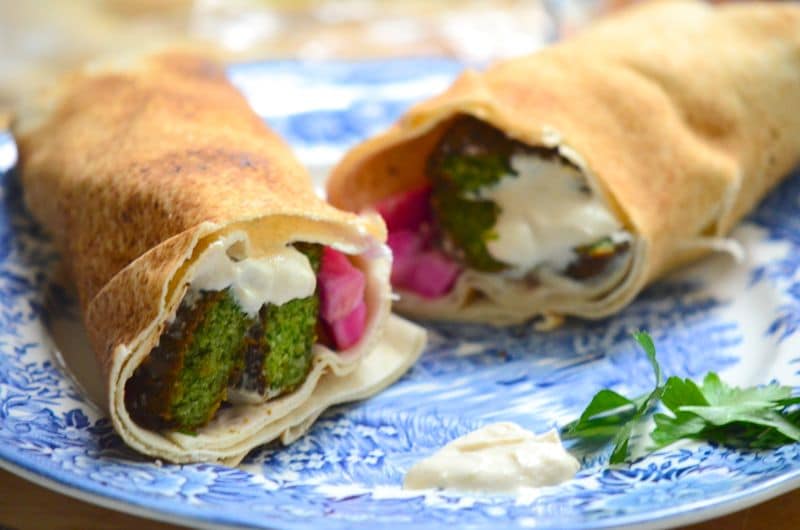
One of the greatest revelations in my cooking journey was the discovery of homemade falafel. When I developed the recipe for you here and in my cookbook, I was blown away at how light, how flavorful, how herb-forward these little nuggets are. So much different–so much better, than any I had eaten before. The key is cooking and eating them right away, and using an abundance of fresh herbs.
What is Falafel?
Falafel fritters are made from a light, delicate crumb of dried chickpeas (soaked but raw) and peeled fava beans with an abundance of fresh herbs (think: mint, cilantro, parsley). All thrown together with jalapeño, garlic, sesame, and onion. It gets flash fried to maximize flavor and texture, and dipped or drizzled with tahini sauce. This recipe is sure to become a regular in your rotation, packed with flavor and high in protein and fiber.
Watch my video on how to make falafel
Why you’ll love homemade falafel
This falafel mixture is not made from a boxed mix! It’s easy to put together, has a fantastic herby, fresh flavor, and is one of my favorite foods to serve as part of a mezze spread or on its own. You can find it at your favorite Middle Eastern restaurant, and it’s a popular street food throughout the Middle East, but it is way better homemade than from street corners! The traditional way is to dip in a creamy tahini sauce, but it’s also delicious with hot sauce. Make sure you have pita bread on hand if you want to turn it into a simple wrap filled with other great things like pickles.
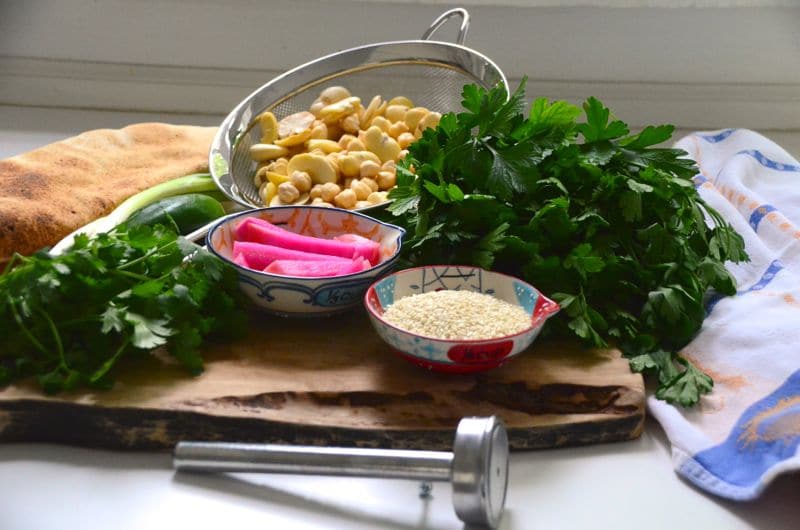
What is Falafel made of?
For the falafel:
Dry chickpeas. Uncooked, soaked-from-dry garbanzo beans.
Fava beans. Make sure you’re using the pale, peeled dry fava beans. Not the dark, unpeeled version.
Fresh herbs. Essential in an authentic falafel recipe. Fresh parsley, mint, and cilantro are my favorite way to keep this dish bright!
Jalapeño. The good news is you can decide how spicy you make your falafel by taking some of the seeds out of the jalapeño. Alternatively, you can use chili powder or cayenne pepper to make it spicy, but traditional falafel gets added texture from jalapeño!
Garlic. One clove does the trick.
Yellow onion. I like the flavor from yellow onions best, but if red onion is what you have on hand, that’s just fine.
Sesame seeds. Just half a tablespoon of these will go into the chickpea mixture.
Baking soda. I think this is much better for deep frying, but baking powder will also work.
Oil. You’re going to need enough oil to deep fry falafel. I prefer safflower, canola, vegetable, peanut, or avocado oil to olive oil for fried falafel.
Salt and black pepper. To taste!
For the Tahini Yogurt Sauce
Yogurt. Plain, regular yogurt, or Lebanese laban will give the sauce a thicker, creamier base.
Tahini. Stir your jar of tahini before measuring, whether or not it’s your first time using it.
Garlic. One clove, minced or grated.
Lemon. This is a key ingredient for freshness. Both lemon juice and lemon zest will brighten the flavor of the sauce.
Salt. To taste!
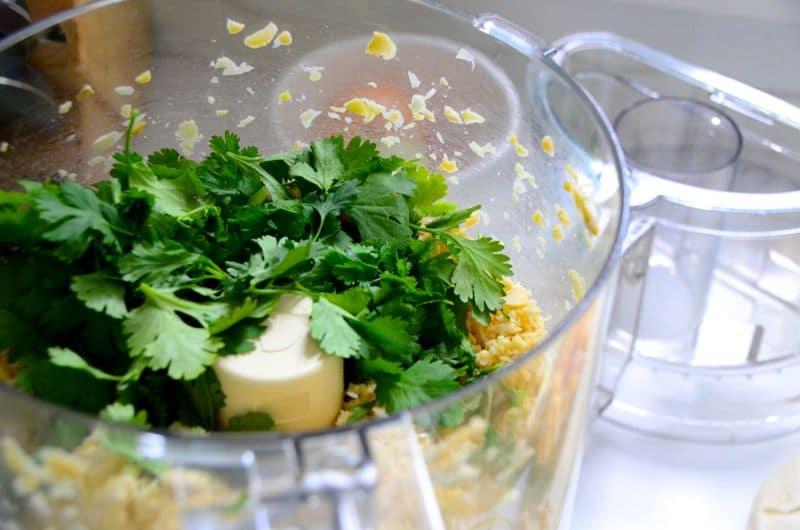
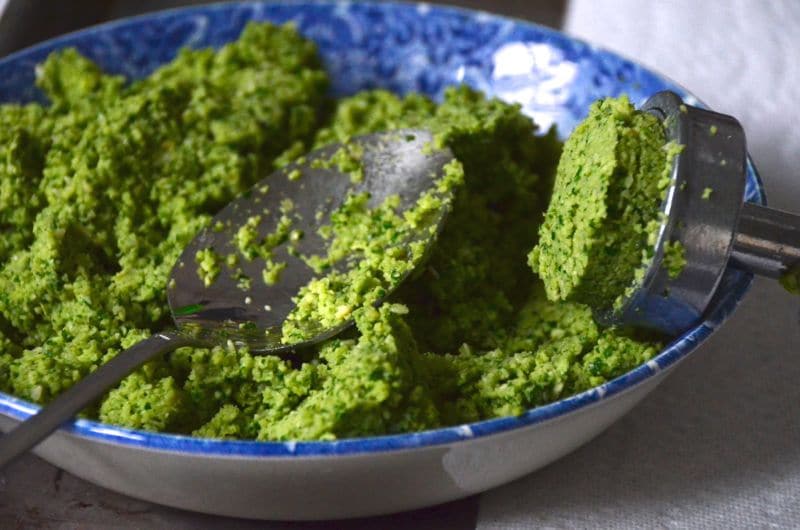

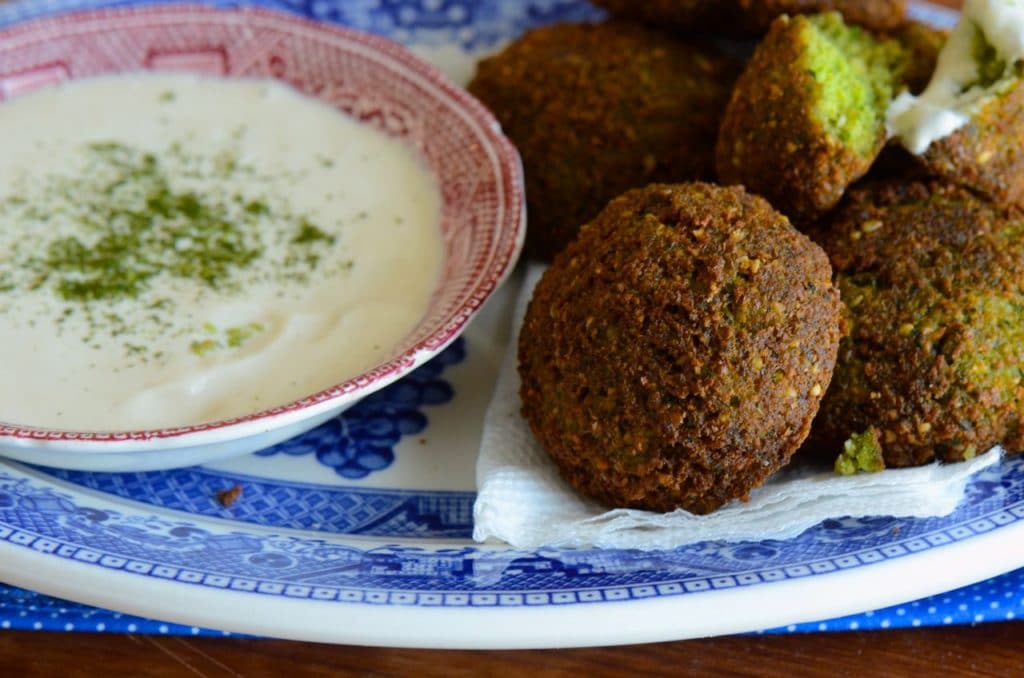
How to make falafel
Step 1. In a large bowl, cover the chickpeas and fava beans with cool water. These need an overnight soak, or up to 24 hours.
Step 2. Drain the chickpeas and fava beans. In a food processor, process them with a teaspoon of salt until they are ground to a coarse crumb. Add the pepper, mint, parsley, cilantro, jalapeño, garlic, onion, and sesame seeds and pulse until the mixture is the right consistency: a moist, bright green crumb. Transfer the mixture to a bowl, stir in the baking soda, and chill for 30 minutes or up to one day.
Step 3. Heat the oil in a 2-quart saucepan or sauté pan, over medium heat, until a pinch of herb dropped in floats and bubbles dramatically (350°F). Be sure the pan you use is deep enough that the falafel will be in an inch of oil. Using a falafel mold, an ice cream scoop or a large spoon, form tightly packed falafel balls or patties. Fry a few of the uncooked falafel patties at a time, in small batches, in the hot oil until they are golden brown, about 1-2 minutes per side. Remove the falafel with tongs or a slotted spoon and place on a paper-lined plate. Repeat until they are all cooked.
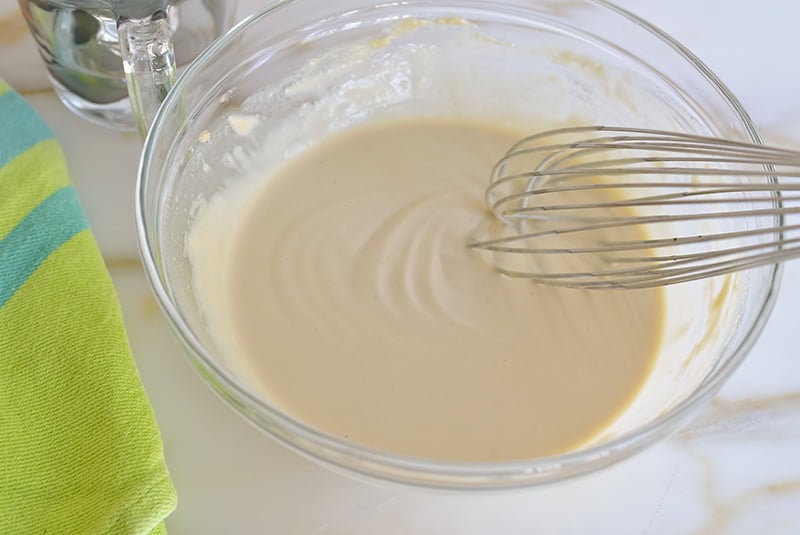
How to make falafel tahini sauce
Process or whisk the yogurt, tahini, garlic, and salt until combined. Add the lemon juice and zest, and whisk or pulse again to combine. Taste and adjust seasonings as needed. Find more details on my recipe for Tahini Sauce, which can include yogurt or not.
Tips for making the best falafel
For best results, do not use canned chickpeas or fava beans, or chickpea flour as a substitution. Using a can of chickpeas will affect the falafel’s light interior and exterior crispy falafel texture.
If you can’t find the pale, peeled fava beans, use all chickpeas instead of a combination of chickpea and fava beans. Dark fava beans have the peels on them and won’t work for this recipe!
Best to eat them right out of the fryer! Room temperature falafel is still delicious, but the best authentic falafel is eaten hot, crispy, and immediately!
Use less oil, not too deep, if you want better control over the frying process.
Using too much oil will result in the small patties absorbing a lot of it and will reduce accomplishing the best texture.
How do you eat falafel?
Serve the falafel hot with the tahini sauce on the side or drizzled over top. Or you can make fresh herb falafel pita wraps by placing a thin loaf of pita on each plate (or a split thicker pita). Lay several falafel along one side of the bread a few inches from the edge. Top with tahini sauce, fresh herbs, and pink pickled turnips. Roll the pita up tightly, cut in half on the diagonal, and serve immediately with more sauce for dipping.
How to Store Lebanese Falafel
Falafel is best eaten immediately after it is fried. Store leftover falafel in an airtight container. The falafel will stay fresh for about 4 days in the refrigerator; reheat in the microwave or in a low oven.
You can also freeze cooked falafel fritters for up to 3 months. Just place the cooled falafel on a baking sheet in the freezer until they are completely frozen and then transfer them to either freezer bags or an airtight container. To reheat, place the frozen falafel in a 350°F oven for 5 minutes or until they are heated through and crispy.
Make ahead option
You can also freeze the uncooked falafel mixture, which freezes beautifully. Just transfer the falafel “dough” to a freezer-safe bag or airtight container. When you are ready to cook the falafel, allow the mixture to thaw in the refrigerator, then form into fritters and follow the frying instructions.
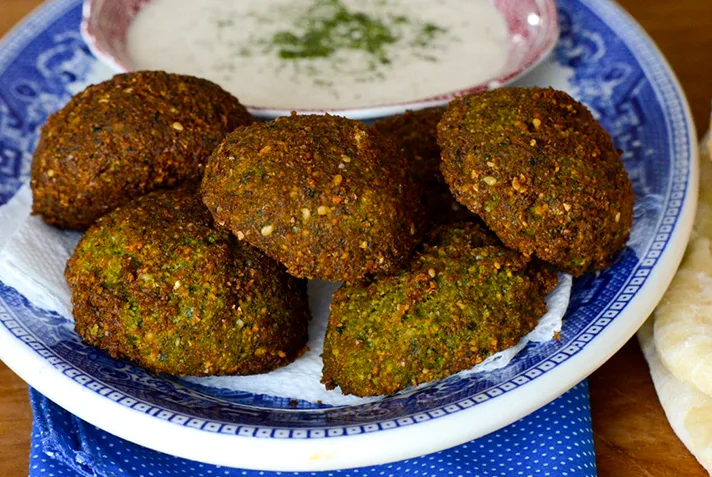
Frequently Asked Questions
You may ask, is falafel high in protein? Yes! Falafel is packed with nutrition because it is high in protein and fiber from the legumes, the chickpeas and fava beans.
Store cooked falafel in an airtight container in the refrigerator – it will keep for a few days.
Yes, freeze the falafel mixture, making sure it’s airtight and/or wrapped tightly in plastic wrap. This fast and easy falafel recipe allows you to have the mixture done long before serving time, just thaw the mixture in the refrigerator or at room temperature, then fry as directed.
You can eat falafel on its own with my tahini yogurt dipping sauce, on a mezze platter with other dips like hummus and baba gannouj, along with soft flatbread, or in pita pockets as the main ingredient of a heartier dish, a falafel sandwich.
You can add other fresh herbs, any you like. It’s best not to substitute the chickpeas for other legumes.
Top your favorite salad with crispy falafel. It’s especially good with fattoush, tabbouleh, and Lebanese salata. Adding falafel gives any salad some density, and makes it a wholesome meal.
Falafel is versatile in that the cooking methods can vary from deep-fried balls, air fryer falafels, or even oven baked falafel. Know though that the falafel will not, using any of these methods result in the crisp exterior that frying alone gives. To bake, use a greased baking sheet, or line one with parchment paper, and coat the falafel with oil. Bake at 375°F until the exterior is golden, turning halfway through baking. If your oven has a convection setting, use this to encourage browning. Once baked, set on a damp paper towel.
Yes, there are no animal products in this recipe. These meatless morsels are great to have in your vegan food rotation.
No nuts in falafel! This is a nut-allergy friendly recipe. For added crunchy texture, sprinkle nuts or seeds over the top for a crunchy texture, but they are not called for in the mixture.
More Recipes with Chickpeas
Lebanese Vegetable Soup with Chickpeas and Kale
Lebanese Fattah: Chickpeas, pita chips, and labneh with garnishes
Crunchy Roast Chickpeas with Za’atar
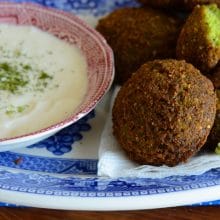
Authentic Lebanese Falafel
Ingredients
For the falafel:
- 1/2 cup dry (uncooked) chickpeas
- 1/2 cup dry peeled fava beans (be sure they’re the pale, peel dry favas, not the dark unpeeled favas which won’t work)
- 1 teaspoon kosher salt
- 1/4 cup fresh mint leaves
- 3/4 cup flat leaf parsley leaves
- 1/2 cup cilantro leaves
- 1 small jalepeno, ribs and seeds removed and coarsely chopped or 1/2 teaspoon cayenne pepper
- 1 clove garlic, minced
- 1/2 cup coarsely chopped yellow onion (1 small onion)
- 1/2 tablespoon sesame seeds
- 1 teaspoon baking soda
- Safflower, vegetable, or canola oil, for frying (about 3 cups)
For the tahini sauce:
- 3/4 cup yogurt or laban
- 1/3 cup tahini (stir before measuring)
- 1 teaspoon kosher salt
- 1 clove garlic, minced or grated
- Juice of 1 lemon
Instructions
- In a medium bowl, cover the chickpeas and fava beans with cool water by several inches. Soak them overnight and up to 24 hours.
- Drain the chickpeas and fava beans. In the food processor, process them with a teaspoon of salt until they are ground to a coarse crumb. Add the mint, parsley, cilantro, jalepneo, garlic, onion, and sesame seeds and pulse until everything is finely ground and the mixture is a fine, web crumb—but not pureed. Transfer the mixture to a bowl, stir in the baking soda, and chill for at least 30 minutes and up to one day.
- To make the tahini sauce, process the yogurt, tahini, salt, and garlic until combined. Pour in the lemon juice and pulse to combine. Taste and adjust the seasonings so that the sauce has a nutty flavor of tahini with a bit of the tang of the yogurt.
- Heat the oil in a 2-quart saucepan or sauté pan until a pinch of herb dropped in floats and bubbles dramatically. Using an ice cream scoop or a large spoon, pack the falafel mixture tightly in to the scoop to form 2-inch ovals, and fry a few at a time until they are golden brown, flipping them over with tongs as soon as they are browned on one side. Remove the falafel from the oil with the tongs to a paper towel-lined plate, and fry the remaining falafel in the same way.
- Serve the falafel hot with the tahini sauce on the side or drizzled over top.
Video
Nutrition information is automatically calculated, so should only be used as an approximation.
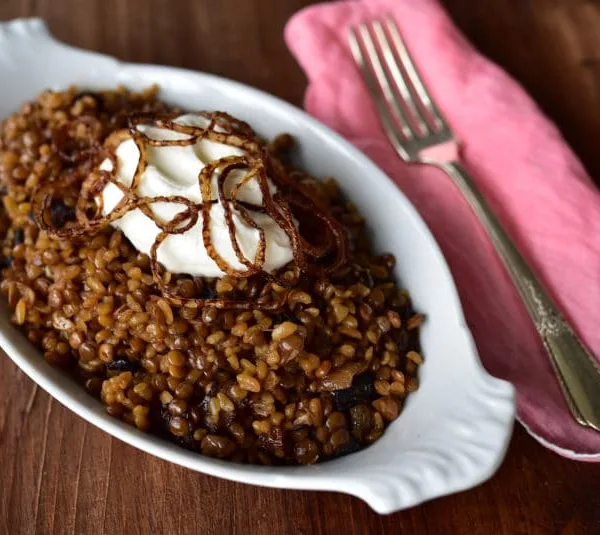
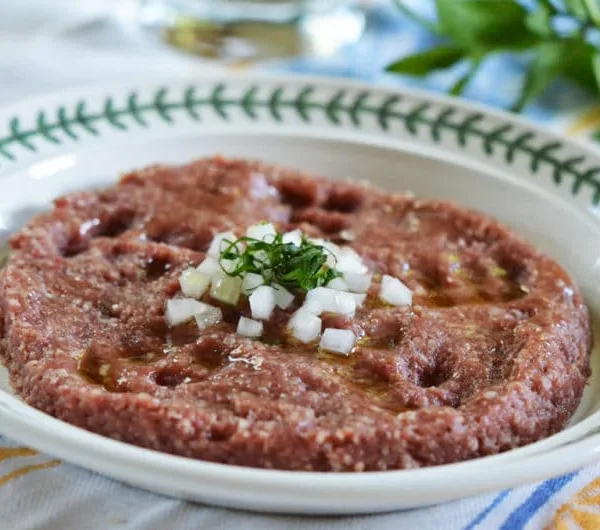
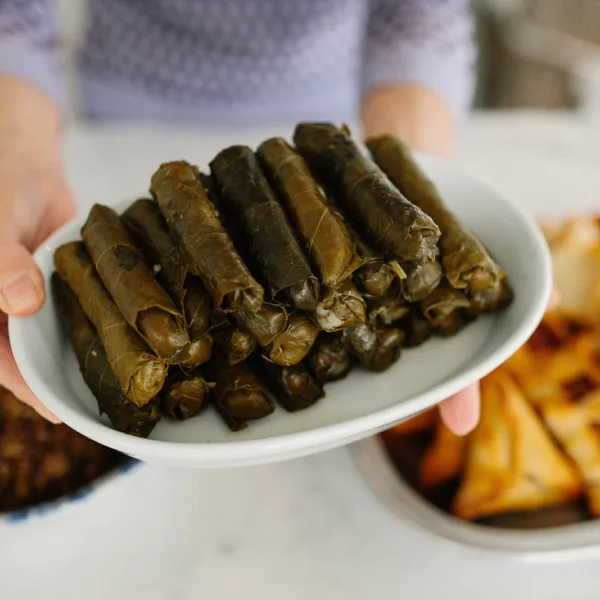
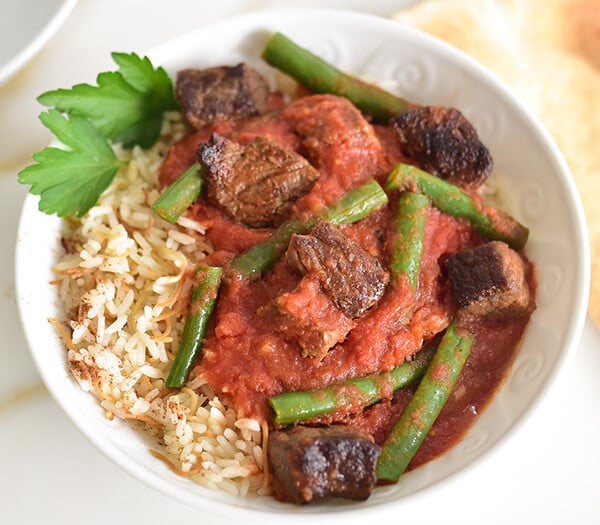







Nice to see a recipe that doesn’t have wheat in it. Been noticing wheat used as filler in a lot of the zaatar sold where I live.
Thank you Nadia! I get questions often about whether there is wheat in the za’atar I sell, so it sure must be more common. Odd.
Maureen – Your recipes and videos are always full of fresh herbs and great flavors! Just wish you were closer so we could drop in when hot falafel are coming out of your kitchen!
It’s healthy wealthy and delicious